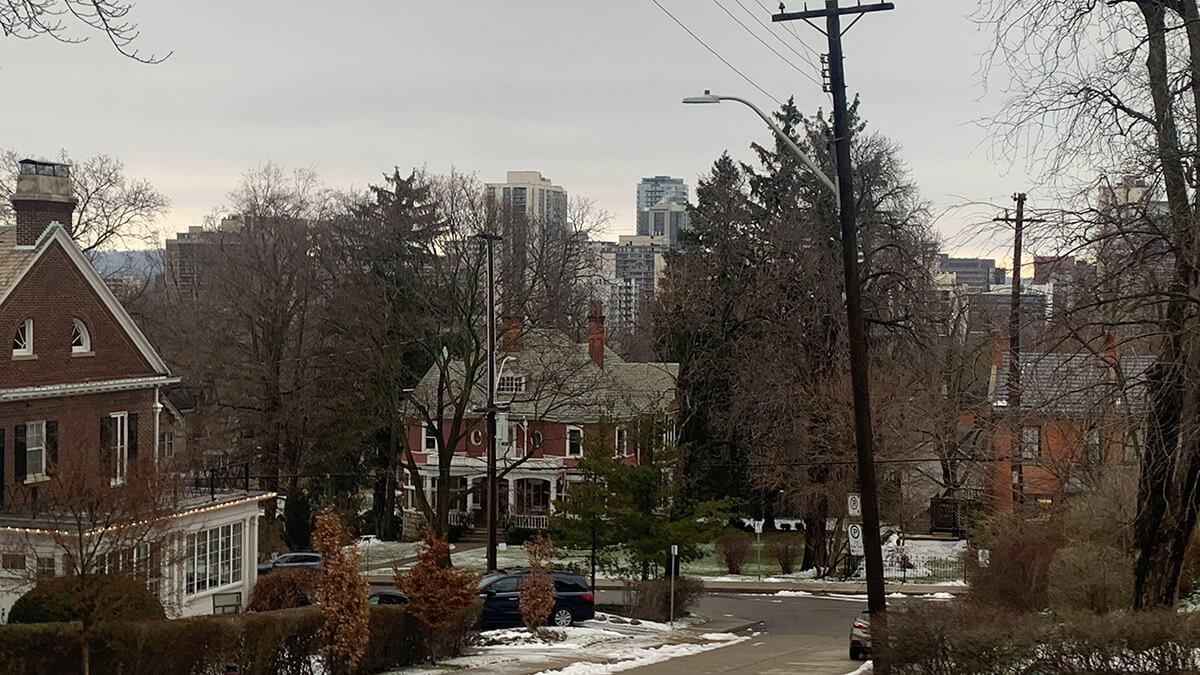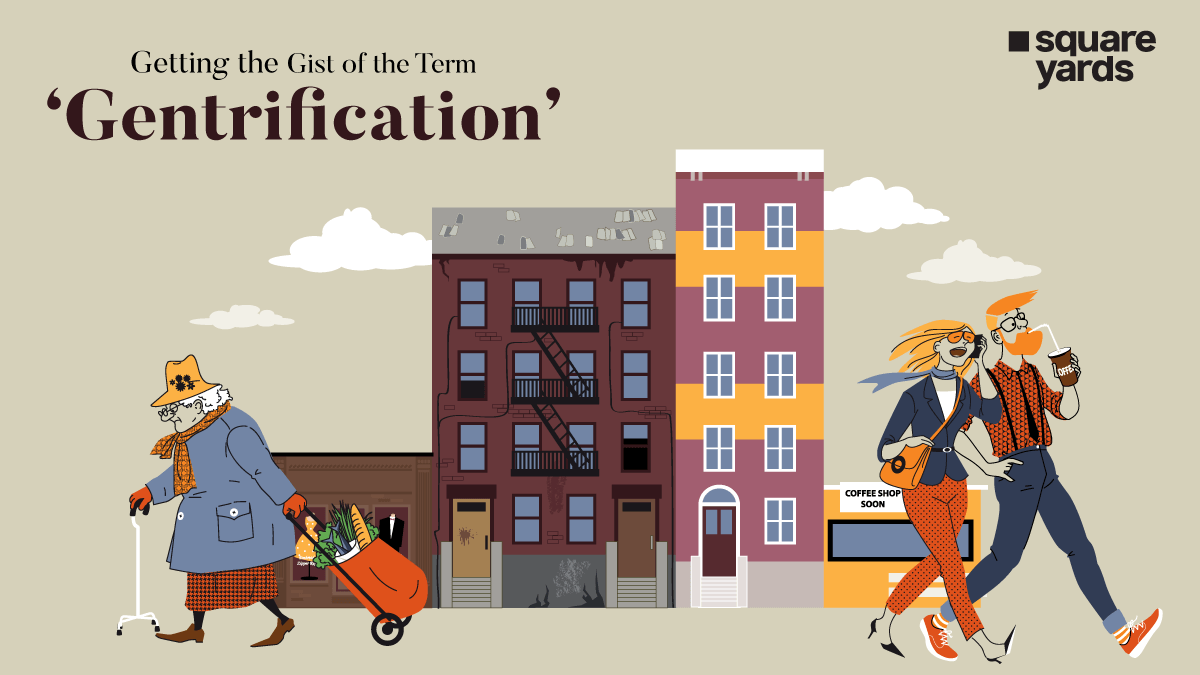Gentrification in Canada stands for a term that captures the transformation of a neighbourhood through the influx of more affluent residents and businesses. It can lead to increased property values and living costs. The term was first used in the 1960s to describe how moving of wealthier people into a city lead to the displacement of lower-income residents because of increasing rents and property taxes. As these neighbourhoods develop, they may see significant enhancements in infrastructure and services. These included new shops, cafes, and public facilities, making them increasingly attractive to potential buyers and renters.
However, while gentrification in Canada can lead to economic growth and revitalised areas, it also brings about challenges, such as displacement of long-time residents and cultural erosion. The debate surrounding gentrification in Canada is complex. It generally involves social equity, economic development, and urban planning issues. It’s crucial for community leaders, developers, and residents to navigate these changes thoughtfully. Ultimately, these ensure the benefits of revitalised neighbourhoods are accessible to all community members, not just the more affluent newcomers.
Now, let’s divert our attention to further essential information that might affect your ultimate decision-making.
How Would You Describe Gentrification?

Gentrification happens when property values go up, richer people move in, and neighbourhoods improve. This might lead to the movement of lower-income groups, resulting in their relocation. The meaning of gentrification has been observed in Canada with varying intensity across different census metropolitan areas (CMAs). The studies show discrepancies in how gentrification is measured and its effects understood.
The concept is deeply intertwined with urban policies and the socioeconomic dynamics within cities. For example, in Canadian cities like Toronto, measures of gentrification vary significantly based on the criteria used, affecting anywhere from about 123,000 to over 900,000 people. It all depends on the definition applied. This variation shows how hard it is to identify the effects of gentrification accurately. Not to mention, different methods can reveal different degrees of change in neighbourhoods.
In addition, the role of public investment and urban planning decisions can significantly influence gentrification trends. Urban sprawl and densification, for instance, play into the dynamics of gentrification by altering how cities expand and how densely people live in new areas. Such developments can increase property values and change neighbourhood characteristics. This ultimately leads to gentrification.
Research also highlights that the presence of certain demographic groups and public amenities can deter or accelerate gentrification. Findings suggest regions with significant racial or economic groups might resist or welcome gentrification. This is linked to past segregation and present financial situations.
Gentrification is Considered to be Advantageous or Disadvantageous?
Whether gentrification is good or bad elicits a wide range of opinions and findings, reflecting its complex impact on communities. Gentrification brings advantages like better public safety, higher property values, new facilities and services. These changes can improve living conditions, create more varied and economically balanced neighbourhoods, and offer local economic growth opportunities.
However, gentrification also carries significant after-effects, particularly for the original residents of the areas undergoing such changes. The most profound impact is the displacement of long-standing residents due to rising housing costs and living expenses. It might also widen the gap between rich and poor, and sometimes, those who are displaced may end up homeless if they can’t find a place they can afford.
Interestingly, some studies challenge the typical narrative that gentrification only harms communities. Studies show that in certain gentrified areas, long-term residents who remain may see stable or lower rent prices and enjoy less exposure to poverty. These areas often feature a blend of income levels among the residents. This suggests that only some of the original residents have left, and some benefit from better living conditions.
What Role Do Property Markets Play in Helping Communities Thrive?

Property markets can play a significant role in the growth and development of communities, particularly by enhancing local economies and improving infrastructure and services. Here’s how these dynamics typically unfold in Canada:
Economic Growth
The real estate market contributes directly to economic growth by increasing property values and investment returns. This, in turn, attracts more investors and developers to the area. This cycle boosts the local economy by creating construction jobs, driving real estate deals, and encouraging more spending in the area. For instance, as property markets grow, they often increase property tax revenues, which can fund public services and infrastructure projects.
Infrastructure Development
Real estate investment is closely tied to infrastructure development. For example, new residential and commercial developments often necessitate the expansion of roads, utilities, and public services. This makes the area more accessible and attractive for further investments. This is particularly significant in Canada, as infrastructure spending has been identified as a key driver for rebuilding cities and addressing historical inequities. As noted in emerging trends in the real estate market.
Housing and Community Services
A thriving property market can lead to better housing options and community services. As areas develop, they often see improvements in public transportation, healthcare facilities, and educational institutions, eventually enhancing the quality of life for residents. As the market grows, more incentives may exist to provide affordable housing solutions to maintain a balanced community.
Social Benefits
Real estate developments can lead to more diversified communities with mixed-income housing and revitalised neighbourhoods. This can reduce poverty rates and improve social cohesion, making the communities more resilient and inclusive.
Adapting to Market Needs
The real estate market often responds to a community’s changing needs, such as the demand for more space due to trends like remote work. This adaptability can lead to more sustainable community growth.
What Approaches Can Be Used for Inclusive Real Estate Development?
Inclusive real estate development is increasingly crucial for promoting equitable communities and enhancing economic performance. To achieve this, several strategies can be implemented:
Diversity and Inclusion Policies
Nearly all commercial real estate firms are now implementing Diversity, Equity, and Inclusion (DEI) strategies. These initiatives often include creating scholarships and internships to increase diversity within the industry. This has substantially impacted the field by bringing more underrepresented people into it. This approach enhances the diversity of ideas and solutions and drives economic benefits by catering to a broader range of residents and consumers.
Accessible Design
In Canada, there’s a significant push towards increasing the supply of accessible housing. The Accelerating Accessibility Coalition (AAC) is one example of a coalition. Here, leaders in real estate and accessibility have joined forces to ensure that new buildings and homes are physically accessible. This coalition emphasises that creating barrier-free homes benefits all citizens and supports a more inclusive and prosperous society.
Community Engagement and Mentorship
Engaging with diverse communities and providing mentorship programs are key to promoting inclusion. Formal company-sponsored mentorship programs are particularly effective for career development and retaining diverse employees. Such initiatives help ensure that diverse perspectives are included in the decision-making processes. This leads to more innovative and responsive development projects.
Training and Awareness
Addressing unconscious bias through training workshops helps promote an inclusive culture within real estate firms. Firms must also ensure transparency and accountability by setting measurable goals for diversity and regularly reporting on progress.
Conclusion
Cities like Toronto, Ottawa, and Hamilton attract diverse residents, and places like Kitchener and London appeal to younger demographics with affordability and tech opportunities. Gentrification in Canada presents a complex issue, offering neighbourhood revitalisation and improved infrastructure but posing displacement risks. This calls for thoughtful urban planning to balance development and community needs. Property markets are crucial in driving economic growth and community development. They enhance local economies and infrastructure while fostering inclusive communities.
You May Also Read
|
What is Stigmatising Real Estate |
|
|
Know The Home Buying Contingencies |
|
|
Guide To Homeowners Association Canada |
|
|
Understand PITI in Real Estate |
Frequently Asked Questions (FAQs)
Does gentrification pose a problem in Canada?
Yes, gentrification is a growing concern in many Canadian cities, particularly in major urban centres like Toronto and Vancouver.
What is gentrification all about?
Gentrification is the process of wealthier people moving into a lower-income neighbourhood. This often leads to increased property values and displacement of original residents.
What are the four forms of gentrification?
The four types of gentrification are expansive, concentrated, limited, and rural.
What is a case of gentrification?
An example of gentrification is when a trendy coffee shop opens in a previously low-income neighbourhood. All to attract wealthier residents who buy homes, driving up housing prices and displacing original residents.



































